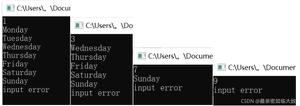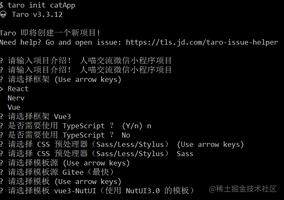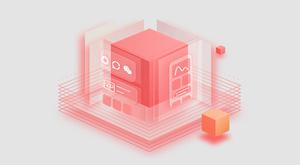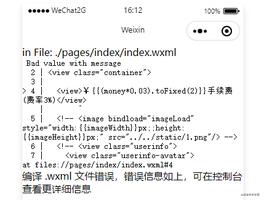C ++程序使用链表实现堆栈
堆栈是包含元素集合的抽象数据结构。堆栈实现了LIFO机制,即,首先弹出最后推送的元素。堆栈中的一些主要操作是-
推入(push)-这会将数据值添加到堆栈的顶部。
弹出(pop)-删除堆栈顶部的数据值。
读取(peek)-这将返回堆栈的顶部数据值。
给出了使用链表实现堆栈的程序,如下所示。
示例
#include <iostream>using namespace std;
struct Node {
int data;
struct Node *next;
};
struct Node* top = NULL;
void push(int val) {
struct Node* newnode = (struct Node*) malloc(sizeof(struct Node));
newnode->data = val;
newnode->next = top;
top = newnode;
}
void pop() {
if(top==NULL)
cout<<"堆栈下溢"<<endl;
else {
cout<<"弹出的元素是 "<< top->data <<endl;
top = top->next;
}
}
void display() {
struct Node* ptr;
if(top==NULL)
cout<<"堆栈为空";
else {
ptr = top;
cout<<"堆栈元素为: ";
while (ptr != NULL) {
cout<< ptr->data <<" ";
ptr = ptr->next;
}
}
cout<<endl;
}
int main() {
int ch, val;
cout<<"1) Push in stack"<<endl;
cout<<"2) Pop from stack"<<endl;
cout<<"3) Display stack"<<endl;
cout<<"4) Exit"<<endl;
do {
cout<<"输入选择: "<<endl;
cin>>ch;
switch(ch) {
case 1: {
cout<<"输入要推送的值:"<<endl;
cin>>val;
push(val);
break;
}
case 2: {
pop();
break;
}
case 3: {
display();
break;
}
case 4: {
cout<<"Exit"<<endl;
break;
}
default: {
cout<<"无效的选择"<<endl;
}
}
}while(ch!=4);
return 0;
}
输出结果
1) Push in stack2) Pop from stack
3) Display stack
4) Exit
输入选择: 1
输入要推送的值: 2
输入选择: 1
输入要推送的值: 6
输入选择: 1
输入要推送的值: 8
输入选择: 1
输入要推送的值: 7
输入选择: 2
弹出的元素是 7
输入选择: 3
堆栈元素为:8 6 2
输入选择: 5
无效的选择
输入选择: 4
Exit
在上面的程序中,节点结构用于创建作为堆栈实现的链表。代码如下。
struct Node {int data;
struct Node *next;
};
该push()函数接受参数val,即要推入堆栈的值。然后创建一个新节点,并将val插入数据部分。该节点被添加到链接列表的最前面,并且指向该列表的顶部。为此的代码段如下。
void push(int val) { struct Node* newnode = (struct Node*) malloc(sizeof(struct Node));
newnode->data = val;
newnode->next = top;
top = newnode;
}
pop()如果有任何值,该函数将弹出堆栈的最高值。如果纸堆是空的,则会打印下溢。给出如下。
void pop() { if(top==NULL)
cout<<"堆栈下溢"<<endl;
else {
cout<<"弹出的元素是 "<< top->data <<endl;
top = top->next;
}
}
该display()函数显示堆栈中的所有元素。这是通过使用ptr来完成的,该ptr最初指向顶部,但一直到堆栈末尾。打印所有对应于ti ptr的数据值。这在下面给出。
void display() { struct Node* ptr;
if(top==NULL)
cout<<"堆栈为空";
else {
ptr = top;
cout<<"堆栈元素为: ";
while (ptr != NULL) {
cout<< ptr->data <<" ";
ptr = ptr->next;
}
}
cout<<endl;
}
该功能main()为用户提供了一个选择,以便他们推,弹出或显示堆栈。根据用户响应,使用开关调用适当的功能。如果用户输入无效的响应,则将其打印出来。下面给出了此代码段。
int main() { int ch, val;
cout<<"1) Push in stack"<<endl;
cout<<"2) Pop from stack"<<endl;
cout<<"3) Display stack"<<endl;
cout<<"4) Exit"<<endl;
do {
cout<<"输入选择: "<<endl;
cin>>ch;
switch(ch) {
case 1: {
cout<<"输入要推送的值:"<<endl;
cin>>val;
push(val);
break;
}
case 2: {
pop();
break;
}
case 3: {
display();
break;
}
case 4: {
cout<<"Exit"<<endl;
break;
}
default: {
cout<<"无效的选择"<<endl;
}
}
}while(ch!=4);
return 0;
}
以上是 C ++程序使用链表实现堆栈 的全部内容, 来源链接: utcz.com/z/317044.html









